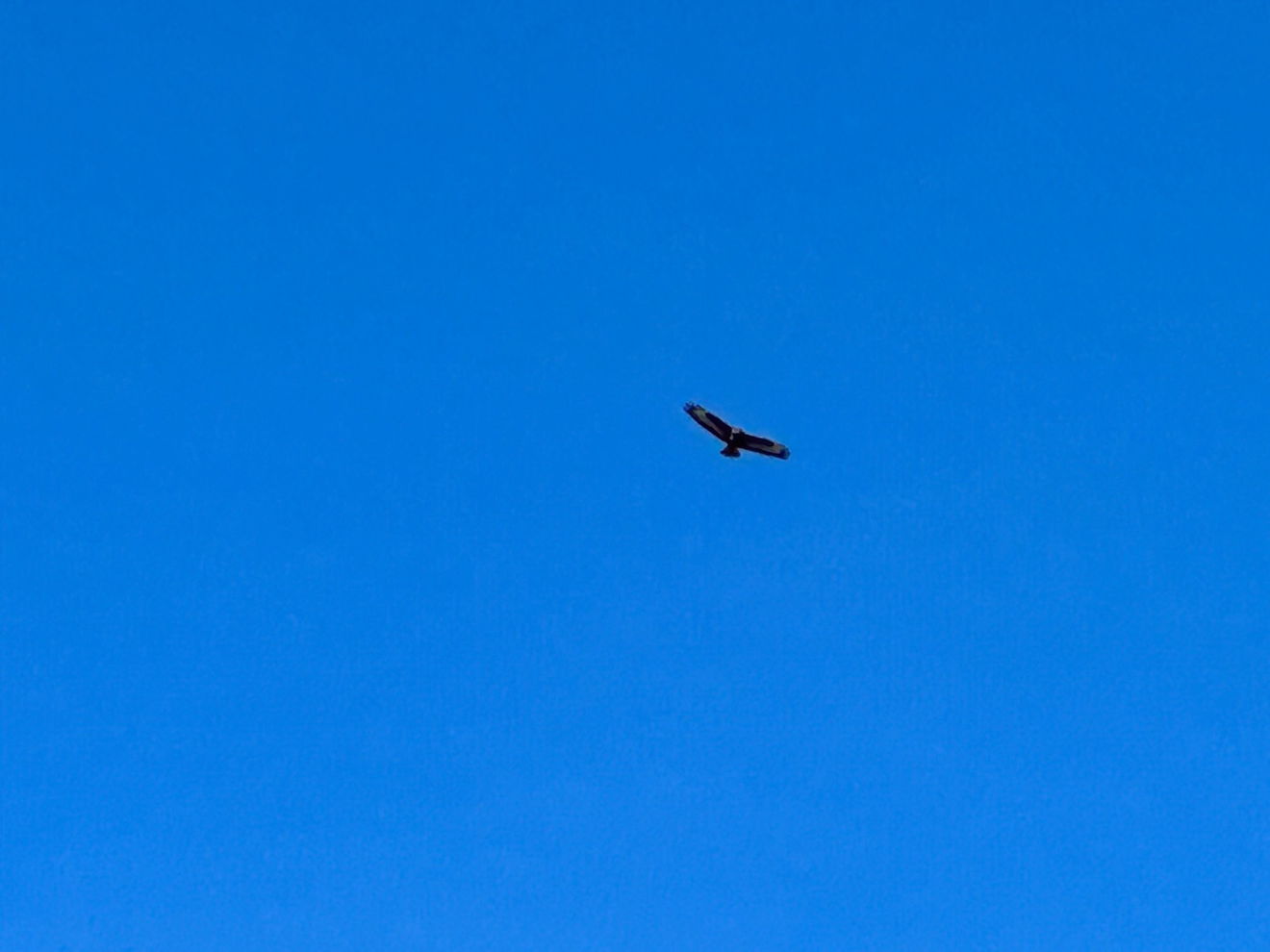Swimming, Swooping And Stand-Off Staring
By Jos Forester-Melville
Today was a northern nature spectacular and an indicator that if you hit the north (as Mark E Smith in The Fall sang) you'll not be disappointed with the wildlife wonders of our summits, streams and skies!
Heading up the A68 past Catcleugh, we were stared out by a small low-lying herd of seven Northumberland Wild Goats. One Billie and a bunch of nannies, nonchalantly chomping on grass and maybe driven downhill by the recent heavy rains. These ancient animals, introduced by farmers over six thousand years ago, are unique and are hard to spot, though this gang clocked us first!

Philiphaugh Salmon Ladder is just west of Selkirk, along Ettrick Water in the Scottish Borders.
En route to the salmon ladder you pass the Philiphaugh water wheel built in 1856. It's built to harness the power of water from the Ettrick which was diverted in the 1850's from the cauld. The large wooden waterwheel powered the sawmill, however the wheel is in retirement now as the flow of water is insufficient to turn it, but it can still be viewed at close quarters from the bridge.
The sawmill still looks to be in operation if the beautiful resin scents are anything to go by.
The wheel was was later used also to power the threshing mill at the farm and in 1874 the mill lade, (the narrow channel of water which conducts the water to the wheel) was extended to power the tweed mill in Selkirk.

Swinging a right at the water wheel, it's a short walk to the salmon ladder at Murray's Cauld. Built 25 years ago by The Tweed Foundation, the concrete structure in the centre of the fast flowing Ettrick was literally a fin up for the Atlantic salmon returning upstream to their breeding grounds to spawn.
In order to successfully traverse the oncoming current, they needed to navigate their way up the series of steps set into the concrete, but in 2014 a new fish pass was installed next to the hydro electric plant. This however doesn't deter some long flappy fellas who still wanted to travel old school up the weir on their own steam.


But all that we saw, sadly slid back to the rushing white water being patrolled by a gutsy goosander! Lots of familial oooohhhhhing and ahhhhhhhing from us as they leapt and then landed without success, while the many silver scaled salmon below the water and out of sight, slid safely on through the fish pass!

A good time to spot the salmon is from mid-September through to the end of November when the water level is high enough. And the spring migration is from May to June. You can also see salmon leaping successfully by the fish ladder and weir under the bridge in Hexham!
Following the flow of the Ettrick, we ambled west over Black Knowe Head passing interesting Pele Towers at Aikwood Tower and Kirkhope Tower (both with fascinating histories and another post for another day!) in search of the spectacular sighting of the Southern Upland Golden Eagles.



Relatively unknown and more associated with the wilder and more remote mountains of the Highlands, there have always been a small population of these mighty raptors in Southern Scotland. But with numbers dwindling and populations becoming unstable, in 2018 The South of Scotland Golden Eagle Project unveiled their conservation efforts of over a decade and released the first eaglets into the Moffat Hills.
We were lucky enough to see them sauntering skywards over the hills of the Ettrick and Yarrow Valleys. Look up, you never know what you might find!



Then homeward bound watching the sun sink out of the sky at St Mary's Loch with just the company of sheep!



